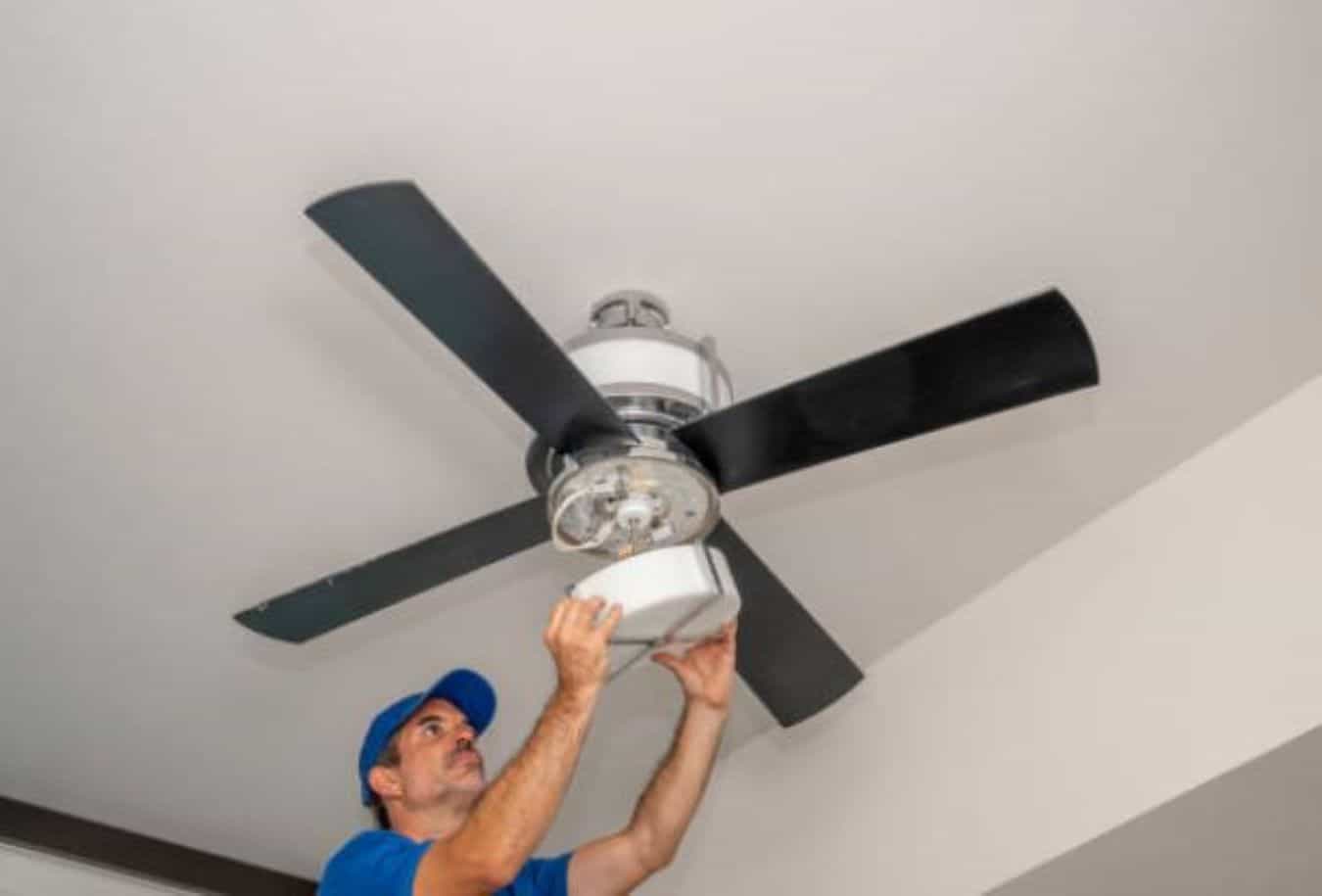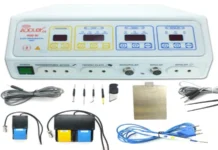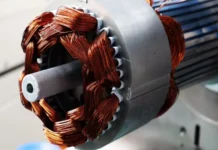Do you want to learn step-by-step how to install a ceiling fan on your own? Then, for guidance, read this article.
This article contains details on how to install a ceiling fan and other information on ceiling fans. Here, you will get details on how a ceiling fan works.
For easy reading, this article is presented in sections, beginning with an overview of ceiling fans. After this, the next section explains how a ceiling fan works.
Furthermore, the next section discusses the advantages and disadvantages of ceiling fans.
This is immediately followed by the characteristics of a ceiling fan and the variables to consider before installing one.
Subsequently, you will see the tools and materials you need to install a ceiling fan.
After this, you will see the step-by-step procedures you should follow to install your ceiling fan.
In conclusion, I will provide answers to some frequently asked questions on how to install a ceiling fan. My final thoughts will follow this.
How to Install a Ceiling Fan: Overview
There are various ways to improve the air in your room or any closed space. For example, consider arriving home from work on a sunny day.
You need to escape the heat inside you. Of course, a fan or an air conditioner will come to mind.
Yes, an air conditioner or a fan can provide you with cool air to reduce your body heat. All you need to do is put on the switch and throw yourself on the couch.
However, this article focuses on ceiling fans. As the name implies, a ceiling fan is a ceiling-mount electrical device with blades that circulates air within an enclosed space to cool or warm the space, depending on the season.
The ceiling fan cools the space during the summer and warms it during the winter. We will discuss how the fan does this later.
Since the first invention of the electric ceiling fan by Philip Diehl in 1882, the evolution of ceiling fans has made them a widely used and efficient cooling system.
Diehl created smaller induction motors to enhance his invention and included lighting kits in ceiling fans.
Hence, the style had a ceiling fan and a chandelier. This was called an electrolier ceiling fan.
Nevertheless, recent inventions do not deviate from the original idea, even when technology and style have progressed. Thus, creating the common household appliance that it is today.
Therefore, the ceiling fan not only makes a room feel cooler or warmer, but it could also beautify your room (if you are using a decorative fan) and even save money on energy bills.
In addition, you can use your ceiling fan to improve the airflow from your air conditioner to reduce energy costs.
At this point, let’s discuss how a ceiling fan works.
How Does A Ceiling Fan Work?
The ceiling fan has many physical features that play certain roles in making it function effectively. We will discuss these features later, but now let us see how electricity rotates the fan blades.
The most important part of the electric ceiling fan is the electric motor. Of course, there are other types of electric motors, but a single-phase induction motor is applicable to an electric fan.
An induction motor is an alternating current (AC) electric motor that converts electrical energy to mechanical energy using a main and auxiliary coil.
Here, we will discuss how the induction motor works to convert electricity to a rotating force on the fan blades.
When an electric current flows through a conductor, it creates an electric field around the conductor in the form of imaginary concentric circles.
However, the magnetic field’s direction depends on the current flow’s direction.
Also, when current flows through the main coil of the induction motor in the fan, it creates a fluctuating magnetic field.
The fluctuating magnetic field is due to the nature of alternating current, which reverses direction periodically.
Furthermore, the auxiliary coil is linked to a capacitor, resulting in a 90-degree phase mismatch between the currents running through the auxiliary coil and the main coil.
As a result of the current phase difference, the magnetic fields formed by the auxiliary coil and the main coil will be 90 degrees apart.
Hence, the resultant rotating magnetic field (RMF) will rotate the induction motor’s rotor.
Thus, the fan blades are connected to the rotor of the motor. Therefore, whenever current goes into the motor, the blades will rotate.
How To Install A Ceiling Fan: Pros And Cons
Installing a ceiling fan in your home has some benefits and drawbacks. These benefits and drawbacks include:
Pros
- The most important benefit of installing a ceiling fan is that it reduces your energy bills.
- Also, some ceiling fans will use extra lighting for your room.
- Ceiling fans could serve decorative purposes.
- Even so, you can use your ceiling fan for outdoor purposes.
- It does not occupy floor space.
- In addition, ceiling fans are inexpensive to purchase and easy to install.
Cons
- Ceiling fans could be noisy.
- Also, it is very inconvenient to maintain a ceiling fan.
- The lights from the ceiling fans are often dull.
How to Install a Ceiling Fan: Features/Factors To Consider
Features Of a Ceiling Fan
The features of an electric ceiling fan include:
Electric Motor
The electric motor in a ceiling fan converts electrical energy from the utility supply or generator to mechanical energy.
Also, the blades of the fan are connected to the output of this motor and rotate according to the rotation of the rotor.
Electric ceiling fans use single-phase induction motors.
Blades
The blades are part of the ceiling fan that cuts through the air and provides a cooling or warming effect to the environment.
However, the speed and direction of the blade’s rotation depend on the electric motor’s rotor.
In addition, the blades can either rotate clockwise or anticlockwise to deliver warm or cool air. These processes are called updraft and downdraft.
For a downdraft, air moves downward. This standard operation makes your room cool when you put on the fan.
This is most suitable for summer.
On the other hand, the air moves upward during an updraft. This reverse operation makes your room warm when you put your fan on.
This mode is suitable during the winter. However, not all ceiling fans have this reverse operation mode.
Base Plate And Down Rod
The metal part of the ceiling fan holds it to the ceiling of your room. Also, the down rod holds the body of the ceiling fan to the base plate.
Also, the down rod gives clearance between the ceiling and the blades. For cathedral ceilings, longer down rods are used to bring the ceiling fan closer to the room’s occupants.
Lighting System
Some ceiling fans come with extra lighting for the room. Although, this lighting is usually not as bright as the regular lighting system.
Factors To Consider
Before you install a ceiling fan in your house, these are the factors you need to consider.
Speed Of Rotation
The speed of rotation of the fan’s blade is a very important factor to consider when choosing a fan. This is because it affects the rate at which the fan moves air.
Hence, you have to check the fan’s cubic feet per minute (CFM) rating. The CFM rating of the fan shows the rate at which the fan moves air.
However, the recommended CFM sizing for room spaces is 1000 to 3000 CFM for small spaces like small bedrooms. For medium bedrooms, kitchens, and dens, a CFM rating of 1600 to 4500 will be suitable.
Then, CFM ratings of 2300 to 6500 or more are suitable for large rooms and small garages.
Size Of Fan Blades
The blades’ sizes vary, which is also one factor that determines how much air the fan circulates. However, a fan with larger blades is liable to move more air and allow better circulation than smaller blades.
Nevertheless, a fan with bigger blades will be heavy. Hence, you need to check the weight of the fan you choose, as heavier ceiling fans will need more substantial outlet box brackets.
Therefore, it is recommended that you use blades with a span under 110cm for small spaces, 110cm to 127 cm for medium bedrooms, and 127 cm or more for large rooms.
Types Of Ceiling Fan
There are three types of fans you can choose from depending on where you want to install them and the additional fixtures. These types of ceiling fans are outdoor, indoor, and ceiling fans with LED lights.
An outdoor ceiling fan improves the airflow in your patio, porch, or deck. These fans should be able to withstand weather and ultraviolet rays, making it important for you to go for a higher-quality heavy-duty fan.
However, indoor ceiling fans will require you to measure and see how much clearance your room has from the floor. For tall ceilings, you will need extension rods.
On the other hand, ceiling fans with LED lights perform a dual function of circulating air and lighting your room. In addition, there are fans with a remote control that will aid you in controlling the light brightness and fan speed without using the switch.
Style And Location
There are various styles of fans on the market. The ones with long blades look more exotic and luxurious.
Also, cheaper ceiling fan blades are often products of plastic or particleboard, while the higher-end ones are products of hardwood and vinyl.
Always install your ceiling fans in the center of the ceiling. Use extension rods for cathedral ceilings.
How to Install a Ceiling Fan: Tools And Materials
These are the tools and materials you will need for your installation.
- A new ceiling fan.
- Measuring tape.
- Step ladder.
- Screwdriver.
- Ceiling fan-rated junction box.
- Fan brace.
- Circuit tester.
- Wire cutter/stripper.
How to Install a Ceiling Fan: Procedures
To freshly install a ceiling fan or replace a lighting point with a ceiling fan in your room, you need to follow these procedures below:
Step 1
Before starting any electrical project in your home, you should first turn off the power. Hence, locate the circuit breaker that supplies the part of the building you are working on and turn it off.
Then, use your circuit tester to check and ensure that the power is off. The light should be off if you already have a lighting installation.
At this point, uninstall the lighting. Then, use your circuit tester to confirm that the power is off before touching the bare wires.
Step 2
Now, check and ensure that the junction box is rated for the ceiling fan. If not, replace it with a ceiling fan-rated junction box.
You could use a fan-rated box with a fan brace that mounts between ceiling joists for more stability.
Step 3
Pass the wires through the fan’s mounting bracket, slide the bracket over the junction box mounting hardware, and tighten the screws. If the fan does not have a slide-on bracket, place the fan bracket over the mounting bolts and secure them with the nuts.
Step 4
Slip the canopies through the down rod and pass the main wires through it. Your fan should be located between 8 and 9 feet for maximum efficiency and comfort.
Hence, if the height of the ceiling is greater than 9 feet, you might need an extension rod. If you are working on a cathedral ceiling, you will certainly need an extension rod.
However, use wire extensions if your wires are not long enough. Secure the down rod to connect properly to the base of the fan.
Then, trim any extra long wires that may not fit easily into the electrical box. Also, trimming the wire will prevent them from vibrating against the canopy when the fan is operating.
Step 5
Attach the hanger ball at the top of the down rod to the mounting bracket on the ceiling. Now, connect the fan wires to your home’s wiring at the junction box.
Ensure to match out the color-coded wires and safely connect them by using the caps supplied with the installation kit of your fan. For example, the green wire connects to the copper ground wire, white wires connect, and black wires connect.
If your fan has a lighting fixture, you will find a separate wire that is not mentioned above. Connect the wire to the black wire to supply current to the lighting fixture.
However, some fans may come with additional wires. Hence, read the owner’s manual for specific instructions.
Use a wire stripper to reveal the conducting part of the wires before connecting them. Then, push the wires into the junction box, push the canopy onto the mounting bracket, and tighten the screws.
Step 6
Attach the fan blades to the motor with screws and any other means provided in the fan kit. After this, install your light fixture, and switch on the power supply.
Then, test your new installation.
Click here to get a visual explanation of how to install a ceiling fan.
How to Install a Ceiling Fan: Frequently Asked Questions
Installing a ceiling fan is a way of reducing your energy bills without losing comfort. Also, installing a fan is a weekend project because it only requires a few hours to complete.
Hence, it is simple to install a ceiling fan if you have basic knowledge of electricity.
Installing a ceiling fan is simple. Just follow the steps above and you will have an excellent installation.
Yes, you can replace an existing light fixture with a ceiling fan in terms of electrical needs. Just ensure that the electrical box the fixture is attached to will support the weight of the fan.
Connect the white wires (neutral wires) of the ceiling fan and the ceiling together. The same goes for the black wires (live wires).
Then, connect the green wire from your fan to the bare wire in the ceiling (ground wire).
Yes.
They are less expensive, and they reduce electricity bills.
Yes.
During the summer, your fan should rotate counterclockwise to create a cooling breeze. Then, the reverse during the winter is for warming air.
Yes.
The fan will operate normally without a ground wire.
Ceiling fans do not reduce the temperature of a room. However, it can make a space feel cooler.
Approximately 10 years.
How to Install a Ceiling Fan: My Final Thoughts
A ceiling fan is a more economical way to improve the air in your room or any enclosed space.
Unlike air conditioners, ceiling fans are not only useful indoors.
They are also used in outdoor spaces like porches, decks, etc.
Also, installing a ceiling fan is not difficult as much as you have a basic knowledge of electricity.
However, the drawbacks of ceiling fans include the noise it produces while operating.
Try to click the links in this article to get all the explanations you need.
I hope you find this article helpful.
Then, fill out the “Leave A Reply” form towards the end of this page to share your thoughts.
To read more articles like this on our site, please visit the following post:




